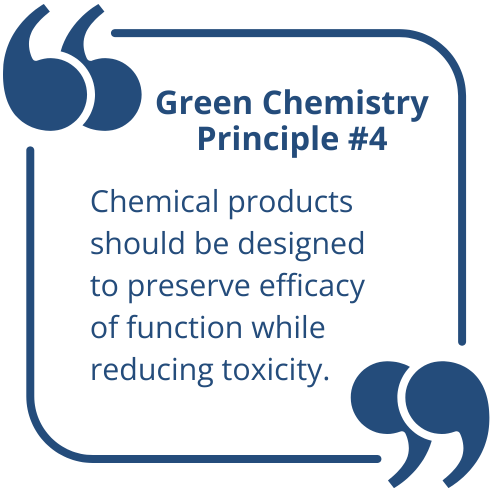Designing Safer and Functional Chemicals
Commercial chemicals created for specific functions impact virtually every aspect of our lives. Developing new chemicals presents a significant economic opportunity. However, without careful design these chemicals can have unintended biological activity, negatively affecting public health and the environment.
Despite the large number of new chemicals launched annually, few are designed from the outset to minimize toxicity. In addition to impacts from the chemicals themselves, their production processes can also affect humans and the environment. Unfortunately, such hazards are usually identified long after the chemical has been made available.
Excitingly, as the field of toxicology evolves, researchers are increasingly implementing correlations, equations, and models that relate chemical structure and properties to biological responses. In turn, chemists now have access to sophisticated predictive toxicology which enables them to address hazards earlier in the design process.
A number of barriers still exist, however. Currently, many chemists lack the training needed to complete these assessments, and toxicological testing often has prohibitive costs.¹ Gaps in knowledge are, where possible, filled using in silico predictive tools. However, few such tools are highly accurate and broadly applicable. This makes it difficult to optimize design for both function and safety.²
That said, there are more professional development opportunities than ever for chemists to learn about toxicology and how to implement safety assessment tools. In addition, an increasing number of research efforts are aimed at understanding toxicity at the molecular level. These studies will help future scientists design chemicals with a better understanding of bioavailability, mechanisms of toxic action, and predictive toxicology.
Check out more resources, including training modules on chemical toxicology, below.


Figure: Relationship between mechanistic toxicology, computational chemistry, and the design of safer chemicals.
Additional Resources
Green Processes: Designing Safer Chemicals
Read this important reference volume covering topics such as toxicity, reducing hazards, and biochemical pesticides.
Learning Modules on Toxicology
Teachers: Prepare for your next lecture or assignment with these ready-to-go guides on green chemistry and toxicology.
Chemical Alternatives & Guide Selections
Learn more about new frameworks being developed to assess safer substitute chemicals and their effects on human health and ecological risks.


